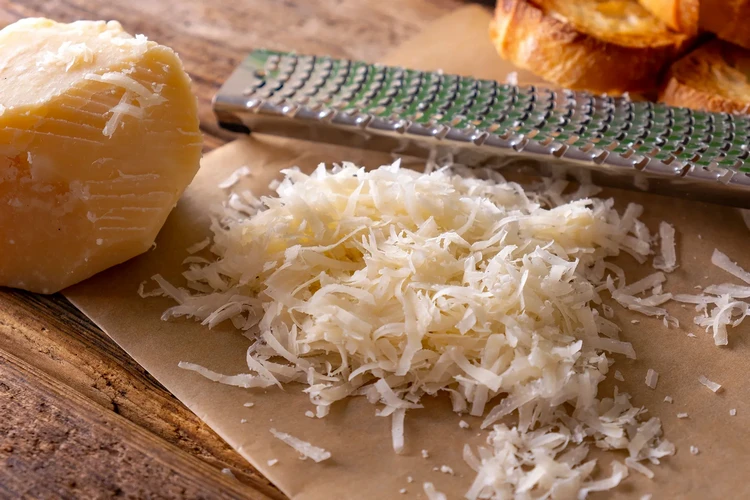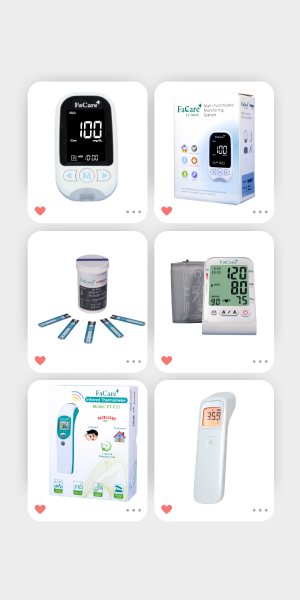Lợi ích sức khỏe của dầu cây rum
Tìm hiểu xem dầu cây rum có lợi ích gì cho sức khỏe của bạn.


Cheese sometimes gets a bad rap for being high in saturated fat and salt, and because of that, a food you should only eat on special occasions. But that's not entirely true, especially when it comes to Parmesan cheese. This famously hard cheese is not only loaded with nutrients, but a great ingredient to keep on hand in your kitchen.
Parmesan is a dense, dry cheese. It contains a lot less water than softer cheeses like mozzarella.
Its history dates back to the Middle Ages, when monks in Italy figured out how to make a cheese that could be stored for long periods of time. It was known as Caseus Parmensis, or the "cheese from Parma." By the 15th century, it was being made in large wheels weighing close to 40 pounds.
Parmesan is sometimes called the "King of Cheese" – and for good reason. In the 2021 World Cheese Awards, it beat out over 4,000 other cheeses to become the most awarded cheese in the world. Scientists have identified 31 compounds – including amino acids, fatty acids, and minerals – that unite to create Parmesan's unique taste profile. Its flavor isn't salty, sweet, sour, or bitter, but best described as umami (savory).

Parmesan is more than a delicious addition to, well, pretty much any food. It's also full of calcium and protein. (Photo Credit: iStock/Getty Images)
The basic building blocks of all cheese, from cheddar to Gouda to Parmesan, are the same: milk, salt, bacteria, and rennet (special enzymes that kick off the cheese-making process.)
First, the milk is curdled. The curds that form are broken up to release more whey, or liquid. Then, the curd is strained and pressed into large wheels before being dunked into a salty brine. From there, the wheels are moved into an aging room where they may stay, ripening in flavor, for several years.
Parmesan vs. Parmigiano-Reggiano Cheese
You might think anything called "Parmesan" is the same as the Italian Parmigiano-Reggiano, but that’s not the case. There aren't strict rules in the U.S. about what can go into the making of cheese labeled "Parmesan."
True Parmigiano-Reggiano is a storied cheese with a tightly controlled process and simple recipe. It has only three ingredients: fresh milk from the Parma/Reggio region of Italy, salt, and rennet. Many kinds of cheese labeled Parmesan are created with more or different ingredients.
It's worth noting that the rennet used in real Parmigiano-Reggiano is taken from the stomach linings of calves, so it's not vegetarian. For a vegetarian option, you'll need to choose a type of Parmesan. Some of those cheesemakers use manmade rennet.
While different dairies produce Parmesan, the process is so well-controlled that the nutrition remains the same across cheesemakers. For every 100 grams of Parmesan:
Despite being a dairy product, Parmesan is naturally lactose-free. It also contains a number of vitamins and minerals. Parmesan is a good source of:
When it comes to health perks, Parmesan can help:
Prevent osteoporosis
In Europe, Parmesan is classified as a functional food, meaning a food that has medicinal benefits. Its high amount of calcium can support good bone health and help prevent osteoporosis (a condition that weakens your bones).
Avoid protein deficiency
If you don't eat meat, then you know it can sometimes be a challenge to get enough protein. Dairy products, especially cheese, can be a rich protein source. Experts suggest around 3.5 ounces of protein-rich foods, such as cheese, in a healthy vegetarian diet.
Keep a healthy blood pressure
Besides helping to strengthen your bones, calcium is a vital nutrient for maintaining healthy blood pressure. It helps your blood vessels contract and relax when they're supposed to. Just 1 ounce of Parmesan contains approximately 335 milligrams of calcium. That's about 26% of the daily recommended value for adults.
Overall, there are few risks to eating Parmesan. It’s a lactose-free cheese, and its hard texture makes it safe to cut away moldy pieces and safely eat the rest. But there is a substance in Parmesan – and all cheeses – that can cause an allergic reaction.
Casein allergy
Also sometimes referred to as a milk allergy, a casein allergy means that you're allergic to the protein casein, found in milk and milk products. A reaction usually happens within a few minutes to a few hours after you've eaten something that contains it.
Symptoms of a casein allergy include hives, wheezing, itching and tingling, swelling of the mouth, shortness of breath, and throwing up. In extreme cases, you could have life-threatening anaphylaxis, or severe allergic symptoms, such as loss of consciousness or death. Kids are the most likely to have a casein allergy, but many outgrow it over time.
Weight gain
Although Parmesan cheese has many health perks, it is high in calories. Carrying extra weight raises your risk of serious health issues like heart attack and stroke. So like most rich foods, Parmesan cheese is best eaten in reasonable amounts.
Besides sprinkling Parmesan on pasta, here are a few other easy ways to enjoy the "King of Cheese":
If you’re concerned about calories, you could try cheeses with less total fat and saturated fat than Parmesan. Some options include:
SOURCES:
Cleveland Clinic, "Is Parmesan Cheese Healthy?"
CDC: “Heart Disease and Stroke.”
Cheese: Chemistry, Physics and Microbiology: “Parmigiano-Reggiano.”
Clinical Cases in Mineral and Bone Metabolism: “Parmigiano Reggiano Cheese and Bone Health.”
Harvard Health Publishing: “Key Minerals to help control blood pressure.”
Heart Matters: “7 cheese facts that will surprise you.”
Mayo Clinic: “If cheese has mold growing on it, should I throw it away?” “Milk allergy,” “Vegetarian Diet – How to get the best nutrition.”
National Institutes of Health: “Calcium.”
U.S. Department of Agriculture: “Parmesan Cheese.”
The Science Learning Hub – Pokapū Akoranga Pūtaiao: "The Science of Cheese."
Parmigiano Reggiano Consortium: "History," "World Cheese Awards: Parmigiano Reggiano is the most awarded cheese in the world," "The art of making."
Journal of Agricultural and Food Chemistry, "Quantitation of Key Tastants and Re-engineering the Taste of Parmesan Cheese."
Penn State University, "Probing Question: What is Umami?"
The Vegetarian Society, "Cheese."
Tìm hiểu xem dầu cây rum có lợi ích gì cho sức khỏe của bạn.
Tìm hiểu những điều bạn cần biết về đường từ quả la hán, khám phá ưu, nhược điểm, rủi ro, lợi ích của nó và cách nó có thể ảnh hưởng đến sức khỏe của bạn.
Tìm hiểu lý do tại sao rượu vang có chứa sunfit và liệu sunfit có phải là nguyên nhân gây ra chứng đau đầu và các phản ứng khác khi uống rượu vang hay không.
Microgreen là gì? Cách ăn những siêu thực phẩm nhỏ bé, thơm ngon này.
Tìm hiểu những chất dinh dưỡng có trong muối đen và cách chúng có thể giúp ích cho mọi vấn đề, từ chứng ợ nóng đến co thắt cơ.
Tìm hiểu những chất dinh dưỡng có trong Beta Glucan và cách chúng có thể hỗ trợ mọi thứ, từ chức năng não đến phòng ngừa ung thư.
Tìm hiểu những chất dinh dưỡng có trong hoàng kỳ và cách chúng có thể giúp ích cho nhiều bệnh, từ bệnh tiểu đường đến chứng mệt mỏi mãn tính.
Tìm hiểu những chất dinh dưỡng có trong ashwagandha và cách nó có thể giúp ích cho mọi việc, từ giảm căng thẳng đến giảm các yếu tố nguy cơ mắc bệnh mãn tính.
Cá mòi giàu axit béo omega-3 và vitamin D giúp tim khỏe mạnh hơn và xương chắc khỏe hơn.
Tìm hiểu những chất dinh dưỡng có trong glucosamine và cách chúng có thể giúp ích cho nhiều vấn đề, từ đau khớp đến loãng xương.
